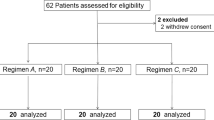Abstract
The purpose of the study was to test the tagging performance and patient’s acceptance of a reduced cathartic preparation, based on iodixanol and PEG, administered to patients 3 h before the exam. One hundred and thirty-two asymptomatic patients were enrolled. As colonic cleansing we used PEG macrogol 3350. For fluid tagging iodixanol was orally administered 3 h before the exam, in a total dose of 50 mL mixed with 34.8 g of PEG in 750 mL of water. Image’s review showed 446 segments (56.4%) clean of feces and 346 segments (43.6%) with feces. Untagged fluid was observed in 74/706 (10.5%) segments; inhomogeneous tagging in 129/706 (16%); the average density of fluid was 1054.74 UH in the cecum–ascending colon and 905.14 UH in the descending–sigmoid colon; the average difference of density between right and left colonic segments was 149 UH, and it was statistically significant (P = 0.016). No side effects related to the consumption of Movicol were reported. Very few side effects related to the tagging solution were reported: mild nausea in 7 (0.05%) patients, mild diarrhea in 10 (0.07%). An average rank of 9 points (SD ± 1) on a 10-point scale (10 = no discomfort, 0 = severe discomfort) resulted from the self-administered questionnaire, showing an excellent acceptance of the preparation. Same day fluid tagging with iodixanol provides an optimal fluid tagging, it is completely tolerated by the patient, and it can be performed under medical control.


Similar content being viewed by others
References
Weitzman ER, Zapka J, Estabrook B, Goins KV Risk and reluctance: understanding impediments to colorectal cancer screening. Prev Med 2001;32:502–513
Callstrom MR, Johnson CD, Fletcher JG, et al. CT colonography without cathartic preparation: feasibility study. Radiology 2001;219:693–698
Lefere P, Gryspeerdt S, Marrannes J, et al. CT colonography after fecal tagging with a reduced cathartic cleansing and a reduced volume of barium. AJR Am J Roentgenol 2005;184(6):1836–1842
Lefere PA, Gryspeerdt SS, Dewyspelaere J, et al. Dietary fecal tagging as a cleansing method before CT colonography: initial results—polyp detection and patient acceptance. Radiology 2002;224:393–403
Fletcher JG, Johnson CD, Welch TJ, et al. Optimization of CT colonography technique: prospective trial in 180 patients. Radiology 2000 216(3):704–711
Iannaccone R, Laghi A, Catalano C, et al. Computed tomographic colonography without cathartic preparation for the detection of colorectal polyps. Gastroenterology 2004 127(5):1300–1311
Pickhardt PJ, Choi JR, Hwang I, et al. Computed tomographic virtual colonoscopy to screen for colorectal neoplasia in asymptomatic adults. N Engl J Med 2003;349(23):2191–2200
Cotton PB, Durkalski VL, Pineau BC, et al. Computed tomographic colonography (virtual colonoscopy): a multicenter comparison with standard colonoscopy for detection of colorectal neoplasia. JAMA 2004 291(14):1713–1719
Rockey DC, Paulson E, Niedzwiecki D, et al. Analysis of air contrast barium enema, computed tomographic colonography, and colonoscopy: prospective comparison. Lancet 2005 365(9456):305–311
Currarino G, Weinberg A, Putnam R Resorption of contrast material from the bladder during cystourethrography causing an excretory urogram. Radiology 1977 123(1):149–150
Eisenberg RL, Hedgcock MW, Shanser JD, et al. Iodine absorption from the gastrointestinal tract during hypaque-enema examination. Radiology 1979 133(3 Pt 1):597–599
Plavsic BM, Newman AC, Reuther WL, et al. Peripheral blood eosinophilia associated with gastrointestinal administration of iodinated contrast media. AJR Am J Roentgenol 2003 180(3):751–753
Schmidt BJ, Foley WD, Bohorfoush AG Toxic epidermal necrolysis related to oral administration of diluted diatrizoate meglumine and diatrizoate sodium. AJR Am J Roentgenol 1998 171(5):1215–1216
Johansen JG, Kolmannskog S Osmotic effect and solubility of amipaque (metrizamide) in the gastrointestinal tract. Invest Radiol 1978 13(1):93–97
McEvoy GPD (ed) (2003) AHFS drug information: roentgenology. American Society of Health-System Pharmacists, Bethesda, MD
Rollandi GA, Curone PF, Pastorino C, et al. Gastromiro vs gastrografin vs prontobario CAT for computerized tomography. Multicenter study. Radiol Med (Torino) 1991 82(3):295–302
Katayama H, Yamaguchi K, Kozuka T, et al. Adverse reactions to ionic and nonionic contrast media: a report from the Japanese Committee on the Safety of Contrast Media. Radiology 1990;175:621–628
Zalis ME, Perumpillichira JJ, Magee C, et al. Tagging-based, electronically cleansed CT colonography: evaluation of patient comfort and image readability. Radiology 2006; 239(1):149–159
Taylor SA, Laghi A, Lefere P, et al. European Society of Gastrointestinal and Abdominal Radiology (ESGAR): consensus statement on CT colonography. Eur Radiol 2007 17(2):575–579
Zalis ME, Barish MA, Choi JR, et al. CT colonography reporting and data system: a consensus proposal. Radiology 2005 236(1):3–9
Rostom A, Jolicoeur E, Dubé C, et al. A randomized prospective trial comparing different regimens of oral sodium phosphate and polyethylene glycol-based lavage solution in the preparation of patients for colonoscopy. Gastrointest Endosc 2006 64(4):544–552
Beebe TJ, Johnson CD, Stoner SM, et al. Assessing attitudes toward laxative preparation in colorectal cancer screening and effects on future testing: potential receptivity to computed tomographic colonography. Mayo Clin Proc 2007 82(6):666–671
Jørgensen NP, Nossen JO, Borch KW, et al. Safety and tolerability of iodixanol in healthy volunteers with reference to two monomeric X-ray contrast media. Eur J Radiol 1992 15(3):252–253
Author information
Authors and Affiliations
Corresponding author
Rights and permissions
About this article
Cite this article
Neri, E., Turini, F., Cerri, F. et al. CT colonography: same-day tagging regimen with iodixanol and reduced cathartic preparation. Abdom Imaging 34, 642–647 (2009). https://doi.org/10.1007/s00261-008-9453-z
Published:
Issue Date:
DOI: https://doi.org/10.1007/s00261-008-9453-z




